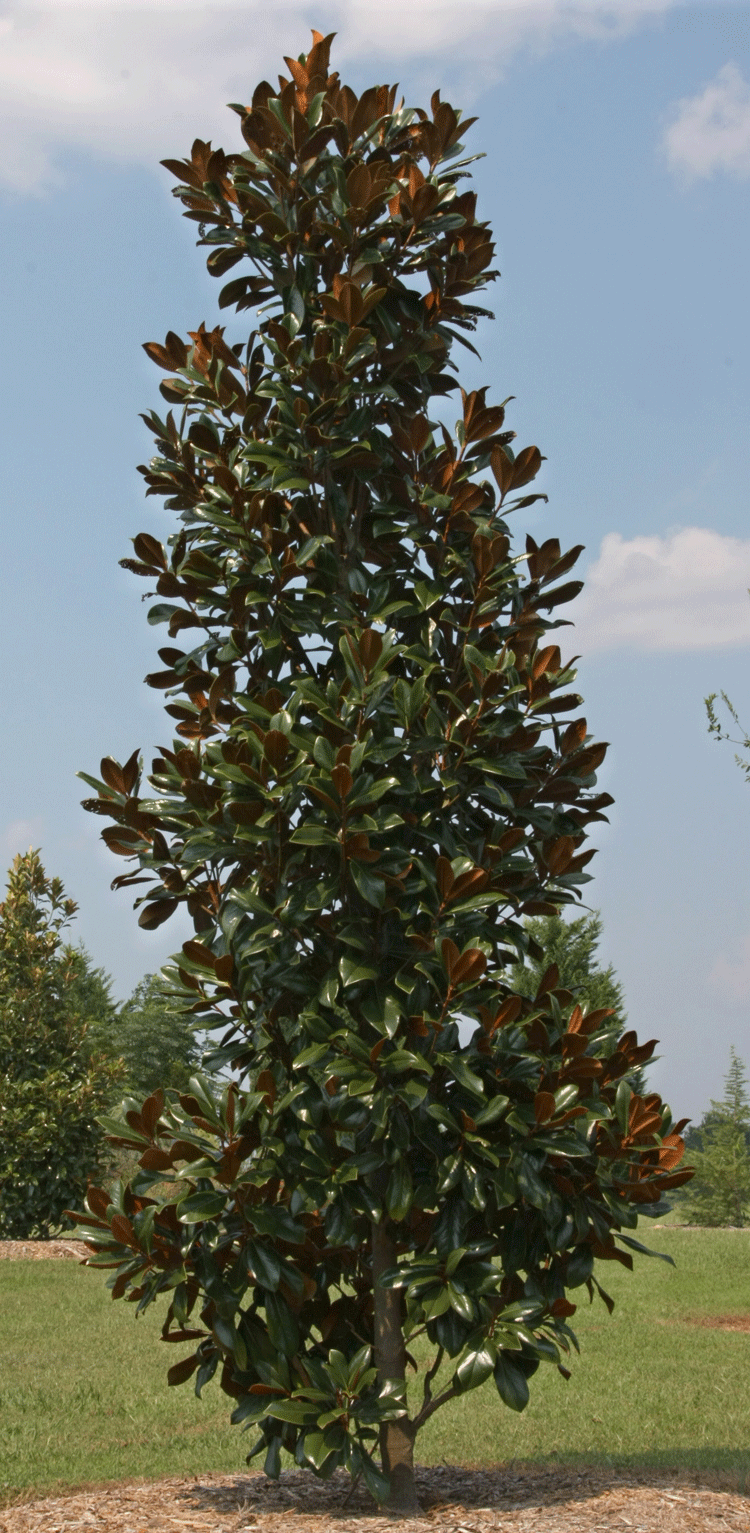 Little Gem Southern Magnolia
Little Gem Southern MagnoliaWell-chosen small trees and shrubs can provide privacy from your neighbors, separation from a road with heavy traffic or a screen to hide unattractive areas. By selecting plants that mature to a height of 20 feet or less, you can create a natural fence. Many times, people do not realize how tall certain trees and shrubs can get. Because of the tall nature of most trees, oftentimes power lines can limit the type of screening material that can be used. The following list includes trees and shrubs that can make an attractive addition to any landscape and should not interfere with power lines.
Little Gem Southern Magnolia (Magnolia grandiflora 'Little Gem') is hardy in zones 7 and 8. It has a medium texture and upright form. It will grow from 15 to 20 feet with an 8- to 10-foot spread. This evergreen tree has a medium growth rate, dark green foliage and white fragrant flowers. This magnolia flowers at a much younger age then the traditional Magnolia grandiflora. The flowers appear in the spring and continue blooming into November. 'Little Gem' Magnolia is an adaptable tree with no serious diseases or insect problems. This plant can be sited in either full sun or partial shade.
 Star Magnolia
Star MagnoliaStar Magnolia (Magnolia stellata) is hardy in zones 4 to 8. It has coarse texture and a rounded form. Its height reaches 20 feet with 10- to 15-foot spread. This deciduous tree has a slow to medium growth rate and blooms at a young age. The flowers are white, star-shaped and fragrant. The flowering peak is in April. The leaves, which appear shortly after bloom, are dark green when mature and turn yellow in the fall. Star Magnolia has no serious insect or disease problems; however, spring frost can damage the flowers. This tree does best in full sun areas.
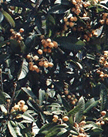 Loquat
LoquatLoquat (Eriobotrya japonica) is hardy in zones 7 to 10. It has coarse texture and a rounded form. It will grow from 10 to 20 feet with a 10- to 15-foot spread. Loquat is a broad-leaved evergreen tree with lustrous dark green foliage and blooms that are formed the summer prior to flowering. Flowers that open in November through January are white and fragrant. Loquat has a medium to fast growth rate. The fruit is edible. Similar to pears, the fruit ripens from April to June. Fireblight is one of the few problems that affects Loquat.
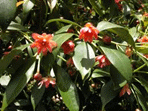 Henry Anise-tree
Henry Anise-treeHenry Anise-tree (Illicium henryi) is hardy in zones 7 to 9. It has a fine to medium texture, dense, pyramidal form and grows from 6 to 15 feet with a similar spread. Henry Anise-tree has evergreen leaves that are shiny, dark green above and dull gray-green below. When crushed they emit an anise-like aroma. Pink to red waxy flowers appear from April to May. They are not fragrant. Henry Anise-tree performs well in both shade and semi-shade, and is also sun-tolerant. It likes moist but well-drained soil. No serious problems are known.
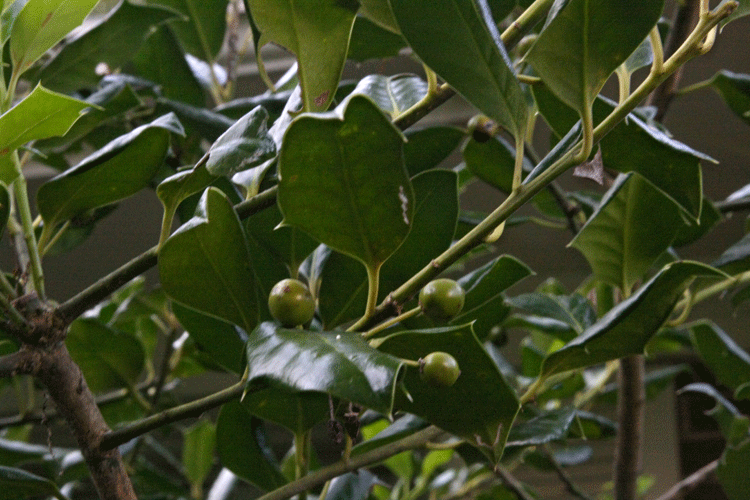 Nellie R. Stevens Holly
Nellie R. Stevens HollyNellie R. Stevens Holly (Ilex x 'Nellie R Stevens') is hardy in zones 6 to 9. It has medium to coarse texture, an upright form with a height ranging from 10 to 20 feet and an 8- to 10-foot spread. This holly is characterized by its medium to fast growing rate. It is a broad-leaved evergreen tree or shrub with leathery, lustrous, dark green leaves. The female plant flowers open at the end of March and bloom through April, followed by bright red fruit that ripens in the fall. It can grow in full sun or partial shade. In order to produce numerous fruit this holly needs a pollinating plant. Male Chinese Holly can be planted in the neighborhood to serve as pollinators since its flowers open at a similar time. Scale insects, aphids and leaf miners can be minor problems.
 Cassine Holly
Cassine HollyCassine Holly (Ilex cassine) is hardy in zones 7 to 9. It has medium texture and a pyramidal form. It reaches a height of 10 to 20 feet with an 8- to 10-foot spread. This holly is a broad-leaved evergreen with a medium growth rate. Its leaves are light green. Red to yellow fruit remain on the tree into winter. It is susceptible to spittlebug. In order to maintain a dense habit, Cassine Holly needs to be pruned. It can grow in full sun or partial shade.
 Weeping Yaupon Holly
Weeping Yaupon HollyWeeping Yaupon Holly (Ilex vomitoria 'Pendula') is hardy in zones 7 to 9. This broad-leaved evergreen has fine texture, a weeping form and a height of 15 to 20 feet with an 8- to 10-foot spread. The growth rate is medium to fast. Small, dense leaves are lustrous dark green. The greenish-white flowers appear from mid- to late April, followed by red fruit. Weeping Yaupon Holly does not have any serious problems. Occasionally, leaf miner can be a problem. Both male and female forms are available in the trade. This holly is adaptable to various soil conditions and grows well in Southern gardens. It can handle both wet and dry growing conditions. The best growth occurs in full sunlight but this tree is tolerant of light shade.
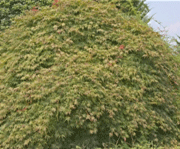 Japanese Maple
Japanese MapleJapanese Maple (Acer Palmatum) is hardy in zones 5 to 8. It has a horizontal branching form and will reach 15 to 20 feet in height with a 10- to 15-foot spread. This is a deciduous tree with a slow to medium growth rate and red or green foliage, depending on the cultivar. Japanese Maple has few disease and insect problems. There are many cultivars available, several of which can be expensive depending on the size purchased. The cultivars are propagated by grafting and even though they are one of the most beautiful trees the price of the grafted cultivars can be high. Japanese Maples do best when planted in areas receiving filtered shade. Planted in full sun, they may suffer leaf scorch.
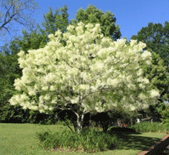 White Fringe Tree or Grancy Grey Beard
White Fringe Tree or Grancy Grey BeardWhite Fringe Tree or Grancy Grey Beard (Chionanthus virginicus) is hardy in zones 4 to 9. This tree will grow from 12 to 20 feet with a 10- to 15-foot spread. It has coarse texture with an irregular form. It is deciduous with beautiful, slightly fragrant white flowers that open in May, followed by dark blue egg-shaped fruit in September. The fruit is a food source for birds and is mostly hidden in the foliage. There are not many serious problems associated with this species. The White Fringe Tree is native to the Southeast.
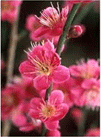 Japanese Apricot
Japanese ApricotJapanese Apricot (Prunus mume) is hardy in zones 6 to 9. It has a medium texture, upright, vase-shaped form, and grows from 15 to 20 feet in height with a 10- to 15-foot spread. It is a slow-growing tree. Japanese Apricot flowers in the South in January and February with an abundance of fragrant white, pink or red flowers. There are more than 250 cultivars available. For best flowering, the tree needs to be pruned immediately after it is finished blooming. This results in production of long branches, which will form the next year's flower buds. It is susceptible to Verticillium wilt. The best location for this plant is in full sun.
Planting Tips
Regardless of which selection you choose, it's always best to plant trees and shrubs in the fall when possible. The root systems will continue to develop as the top of the plant shuts down with cooler temperatures. Roots are thus established prior to the hotter temperatures of spring and summer. Individual planting holes should be dug twice as wide as the root ball and no deeper than the top of the container. Do not add soil amendments to individual planting holes. Water lightly and frequently for the first few weeks. Delay fertilization until the following spring. Irrigate plants as necessary, providing approximately 1 inch of water per week after establishment.
Technical assistance was provided by Adrianne Todd, horticultural assistant.
Status and Revision History
Published on Feb 17, 2011
Published with Full Review on Feb 01, 2014
Published with Full Review on Mar 28, 2017
Published with Full Review on May 29, 2020
Published with Full Review on Jun 24, 2022


























































